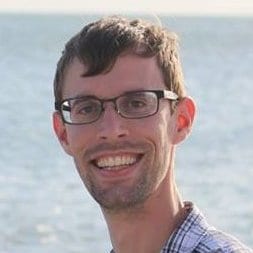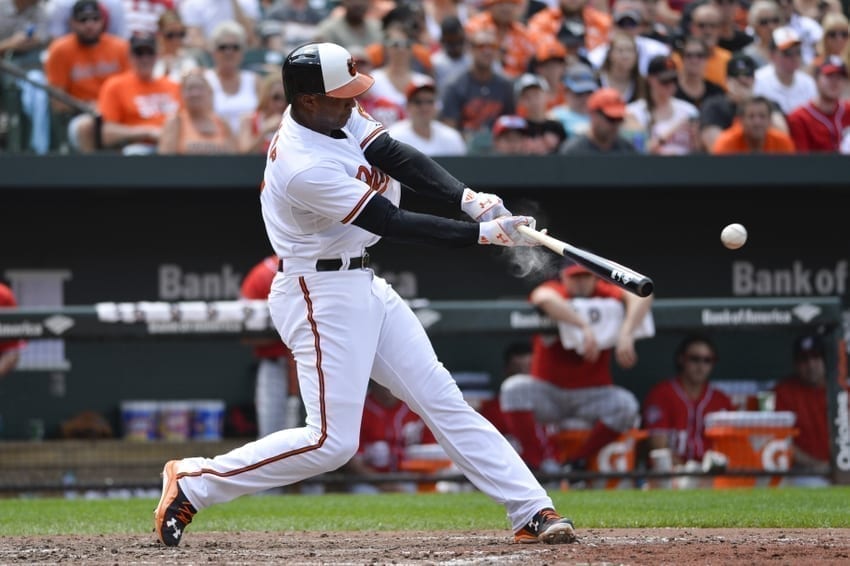On October 4, 2016, the playoff road to the 2016 World Series began with the Orioles vs. Blue Jays Wildcard game. It was an interesting situation for me personally. I had grown up three hours south of Baltimore and had been an Orioles fan for as long as I had followed baseball. I cut my teeth on the playoff teams of the mid-90s, survived the lean years, and was in the crowd when the postseason returned to Baltimore in 2012. However, on that day in 2016 I was working as an Analyst for the Tampa Bay Rays and had a more vested interest in the Orioles not doing too well. Despite this, I was still curious if my favorite team—non-employer division—could advance further in the playoffs.
(You can discuss this on the BSL Board here.)
We all know how that game turned out. Bottom of the eleventh, tied game, in comes Ubaldo Jimenez. A couple of baserunners later, Zach Britton—after an incredible season in which he ran a 0.54 ERA and saved 47 games—remained in the bullpen for the potential future save situation. In stepped Edwin Encarnacion, and well…
It was a frustrating end to a good Orioles’ season. They had outplayed their projections, true, but once you get to the playoffs, there’s always hope that your team will get hot. Little did we know at the time that with that Edwin Encarnacion swing, we were seeing the contention window of the Manny Machado/Adam Jones Orioles slam shut.
As frustrating as the conclusion of the 2016 season was, the 2017 trade deadline left many fans with a more impending sense of doom. Despite being 4.5 games out of the last playoff spot and playing more like a team 13 games under .500, the team decided to forego trading off their assets to start the rebuilding process and try for one last run at glory. Now, the team didn’t give up that much to pursue Jeremy Hellickson, but the path that the team decided to follow seemed distinctly contradictory to where the team was realistically headed.
Of course, this has led us to where the Orioles team is now. Rather than being in the running for the playoffs, the team’s in the running for the number one pick (Who’s all-in for Bobby Witt Jr.?). There are whispers about power struggles in the front office. The Manny Machado and Zach Britton rumors are flying, and the rebuild is on. However, more important to the next Orioles playoff run is Jonathan Schoop, Dylan Bundy, and Kevin Gausman. The Orioles can increase their prospect haul by making these players available this deadline, and given the current outlook of the franchise, they would be well-advised to do so.
Predicting the return that teams are pursuing for their traded stars is, as Matt Schwartz notes, a very difficult exercise. There are several factors that play into a deal, not least of which is that teams often value prospects differently from the public. But that said, looking at the returns of trades through the lens of public prospect lists can give us insight into what the Orioles lost and what they stand to gain.
It’s generally understood that the more years of control over a player a team has, the more value a team can get for that player. The question is, how much more? To answer this, we can look back at 186 trades since 2009 that (1) Occurred around the trade season, i.e., June or July (2) Involved a team clearly selling off major league assets, and (3) Returns primarily prospects or pre-arbitration players.
So looking at this, how does the return for a rental player compare to that of a player with even just one more year of control? Really, this is a question about what did the Orioles lose by not trading players such as Manny Machado, Zach Britton, and Brad Brach last year. And the answer is, possibly a fair amount.
| Extra Years | Top 100 | Org Top 10 | Org Top 20 | None |
|---|---|---|---|---|
| 0 | 17.3% | 21.8% | 22.7% | 38.2% |
| 1 | 25.0% | 36.1% | 19.4% | 19.4% |
Looking at the headlining prospect in these deals, having the extra year of control increases the chances of getting at least an Organization Top-10 prospect by 22%, with the chances of getting a Top-100 overall prospect increased by about 8%. Now, this doesn’t account for a players performance and age, but we can adjust for that.
Let’s look at Manny Machado last year versus this year. Had the Orioles decided to trade him last year, based on the historical record of trades combined with Manny’s age and performance, they would be expected to get a Top-100 prospect as a headliner approximately 84% of the time. This season, with Machado playing better but a year older and only a rental, the Orioles would be expected to get a Top-100 headliner approximately 65% of the time.
Zach Britton is another example of this. Last year, even off a DL stint and diminished performance, he could be expected to return a Top-100 prospect about 32% of the time. This year, with another injury and with no team control, that Top-100 chance is down to 13%. At this point, they only way that Britton would be returning a top-quality prospect is by combining him with Machado, a reported possibility.
This all leads us to Jonathan Schoop. He has had a rough season to be sure. His surface numbers—power, average, plate discipline—are down across the board. The numbers below the line aren’t great either. His exit velocity is down, he’s hitting more grounders, and chasing more pitches. All this has led to his worst season ever. If the team were to cut bait with him right now, they would be more likely to get an organizational top-10 prospect (36%) than a top-100 guy (28.8%).
With this in mind, one might counsel patience. If the team were to wait until next trade deadline, he might be able to recoup some of his value through better performance. However, to offset Schoop’s increased age and rental status, Schoop would need to put up around 1.6 WAR from the start of the 2019 season just to have the same chance of getting a top-tier prospect as right now. While possible, this 1.6 WAR would represent Schoop’s second-best total season WAR, making it a really tough ask for the second baseman. Even with his poor performance thus far, the Orioles may be best served trying to cash in on Schoop’s recent hot streak and extra year of control.
While fans can see the case for trading Schoop, it can be tougher to convince them to trade either Bundy or Gausman. These two pitchers have long been the promised saviors of a historically poor Orioles rotation. While neither has lived up to the potential promised in their prospect rankings, they still have lead the rotation. Bundy in particular has shown flashes of brilliance, with nasty stuff that can leave batters frozen. The thought is that these two pitchers may be able to survive a couple of down years and still lead the rotation for the next Orioles run.
That’s unlikely to happen, as the Orioles’ rebuild is likely to take longer than a couple of years. This team is going to have to build up its talent level from the ground up, without the benefit of a stocked farm system at the moment. Trading Bundy and Gausman now gives them the best chance to execute this retool.
For example, if we assume that Gausman performs at the identical pace that he has to this point in 2018, the expected return diminishes distinctly over the next few years.
Top 100 Plus Pieces23.8%21.2%18.6%Top 10021.0%20.8%20.1%
| Prospect Return | 2018 (2 Years) | 2019 (1 Year) | 2020 (Rental) |
|---|---|---|---|
| Multiple Top 100 | 17.3% | 13.0% | 9.9% |
The same holds for Dylan Bundy. In both cases, unless the player is able to increase their level of performance, the team is most likely to maximize their return by trading them when their years of remaining control is at their highest. Neither Bundy or Gausman have a past history that suggests that they can improve their performance enough to overcome their increasing age and decreasing years of control. Even further, the weak starting pitching market—one that has made Nathan Eovaldi a prized commodity—could make both of these young pitchers more appealing to contenders with already strained budgets.
It happened that I was in Baltimore on Deadline Day in 2017, watching the Orioles walkoff against the Royals in an exciting game. But despite the win, the decisions made earlier that day had soured me on the franchise’s future. By failing to move the team’s prominent pieces at a time when they had higher value, the rebuilding process was not only put on hold for a year, it was compromised due to the lesser returns that the team could expect going forward. If the Orioles hope to return to the postseason any time in the near future, they not only have to trade the obvious rental pieces, they need to pursue trades for pieces that will no longer be around by the time that next run occurs.

Orioles Analyst
Dr. Stephen Loftus received his Ph.D. in Statistics from Virginia Tech in 2015 and is an Assistant Professor of Mathematical Sciences at Randolph-Macon College. Prior to that, he worked as an Analyst in Baseball Research and Development for the Tampa Bay Rays, focusing on the Amateur Draft. He formerly wrote at FanGraphs and Beyond the Box Score. As a lifelong fan of the Orioles, he fondly remembers the playoff teams of 1996-97 and prefers to forget constantly impending doom of Jorge Julio, Albert Belle’s contract, and most years between 1998 and 2011.
